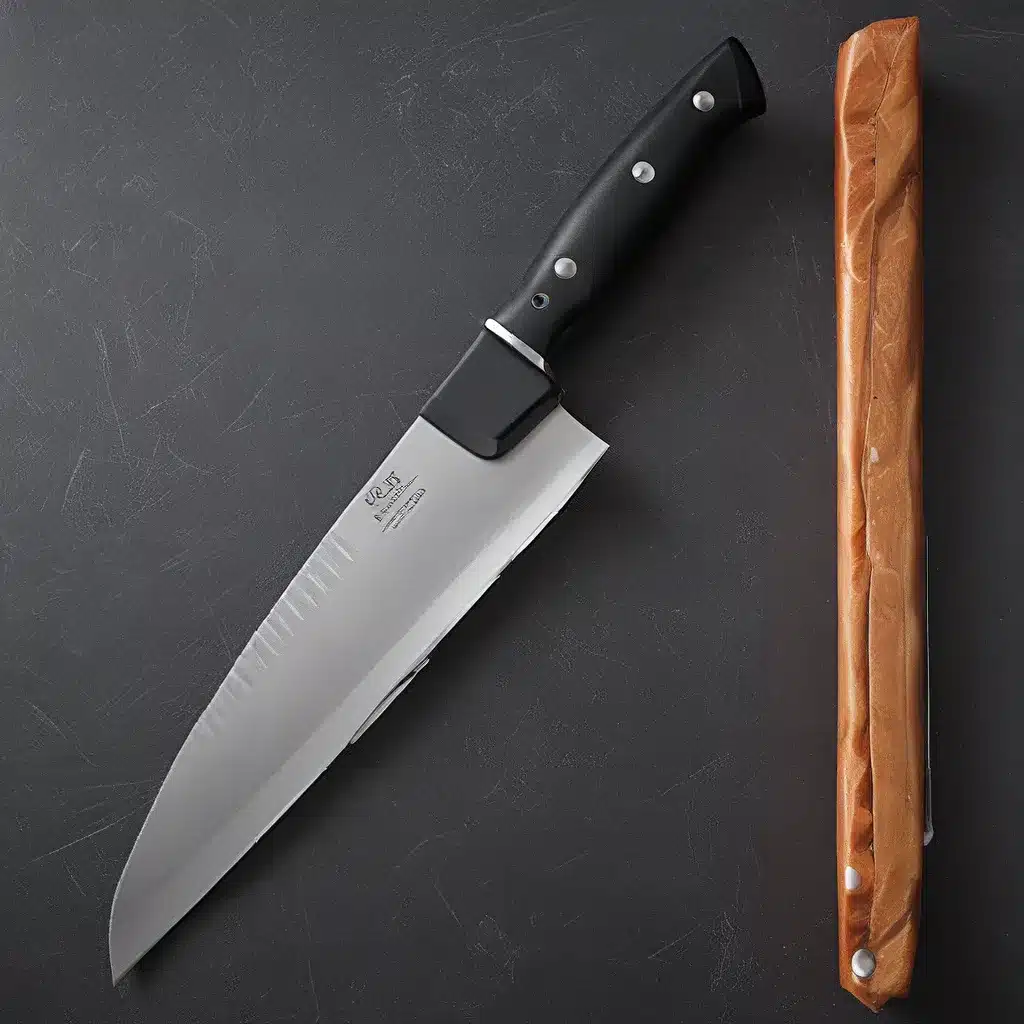
As a home chef, I’ve always been fascinated by the intricate art of knife skills. The way a skilled hand can transform a simple ingredient into a culinary masterpiece is nothing short of captivating. But let’s be honest, mastering the art of precise cutting can be a daunting task, especially when you’re surrounded by a sea of knives, each with its own unique purpose and technique.
Well, fear not, my fellow culinary enthusiasts, because today, I’m here to unlock the secrets of Japanese sushi knives and the precision cutting techniques that make them the tools of choice for sushi chefs and culinary artists alike. Get ready to elevate your kitchen game and impress your friends and family with your newfound knife skills!
Anatomy of a Japanese Sushi Knife
To truly appreciate the art of slicing, we need to dive into the intricate anatomy of a Japanese sushi knife. These knives are renowned for their unparalleled sharpness, meticulous design, and superior cutting performance, all of which stem from the careful consideration of their various components.
The blade is the cornerstone of a sushi knife’s performance, and it’s meticulously crafted using high-quality steel known for its exceptional sharpness, durability, and edge retention. From single-bevel blades designed for precision slicing to the thick and robust deba knives used for heavy-duty tasks, each type of sushi knife is tailored to specific cutting techniques.
But the knife’s prowess doesn’t stop at the blade – the handle is equally crucial. Carefully crafted to provide a comfortable and secure grip, the handle ensures optimal control and maneuverability during those delicate cutting maneuvers. Common handle materials include wood, composite materials, and even bamboo, adding both function and beauty to these culinary tools.
Mastering the Techniques
Now that we’ve explored the technical aspects of Japanese sushi knives, it’s time to dive into the world of precision cutting techniques. These skills are the backbone of every great chef’s repertoire, and they form the cornerstone of culinary excellence.
The Pinch Grip
The pinch grip is the foundation of proper knife handling. It involves gripping the knife handle with three fingers while using the thumb and index finger to pinch the blade near the bolster. This grip provides unparalleled control and precision, allowing for accurate cuts and intricate slicing.
The Rock Chop
The rock chop is a rhythmic cutting motion in which the knife’s blade rocks back and forth on the cutting board. This technique is ideal for chopping herbs, garlic, and onions, as it allows for uniform cuts with a consistent rocking motion.
The Slice
Slicing is the art of creating thin, even pieces of ingredients. The key to mastering this technique is to maintain a smooth forward and backward motion of the knife while keeping your fingers tucked safely away from the blade.
Julienne, Dicing, and Chiffonade
From the delicate julienne (long, thin strips) to the perfect diced cubes and the elegant chiffonade (thin, ribbon-like slices of leafy greens), each of these techniques requires precision, practice, and a keen eye for detail.
Tourne and Batonnet
The tourne (seven-sided oblong shapes) and batonnet (evenly sized rectangular sticks) cuts showcase the true artistry of knife skills, transforming simple ingredients into culinary masterpieces.
Honing Your Knife Skills
Becoming a master of knife skills is a journey that requires dedication, practice, and a commitment to precision. As an aspiring chef, I’ve learned that the key to success lies in a few essential tips:
-
Start with the Fundamentals: Begin by mastering the basic techniques, such as the pinch grip, slice, and rock chop. These skills form the building blocks for more advanced cuts.
-
Invest in Quality Tools: A chef is only as good as their tools. Invest in high-quality Japanese sushi knives that are well-balanced and comfortable to handle. Regularly sharpen and maintain them to ensure optimal performance.
-
Practice, Practice, Practice: Knife skills improve with regular practice. Set aside time to hone your cutting techniques, and consider using inexpensive ingredients like potatoes and carrots to minimize food wastage.
-
Seek Guidance: Don’t hesitate to learn from experienced chefs or take a knife skills class. Watching instructional videos and receiving feedback can provide invaluable insights.
-
Prioritize Safety: Always keep safety at the forefront of your mind. Pay close attention to hand placement, keep your fingers tucked away from the blade, and use a cutting board with a non-slip surface.
-
Unleash Your Creativity: Once you’ve mastered the basics, allow your creativity to flourish. Experiment with decorative cuts and intricate garnishes to elevate your dishes and showcase your newfound knife skills.
Remember, the journey to becoming a knife skills master is a lifelong pursuit. But with dedication, practice, and a touch of creativity, you can transform your kitchen into a stage for culinary artistry, where the precision of your cuts is the centerpiece of every dish.
So, what are you waiting for? Grab your Japanese sushi knives, sharpen your skills, and get ready to slice, dice, and mince your way to culinary greatness. The world of precision cutting is yours for the taking!


